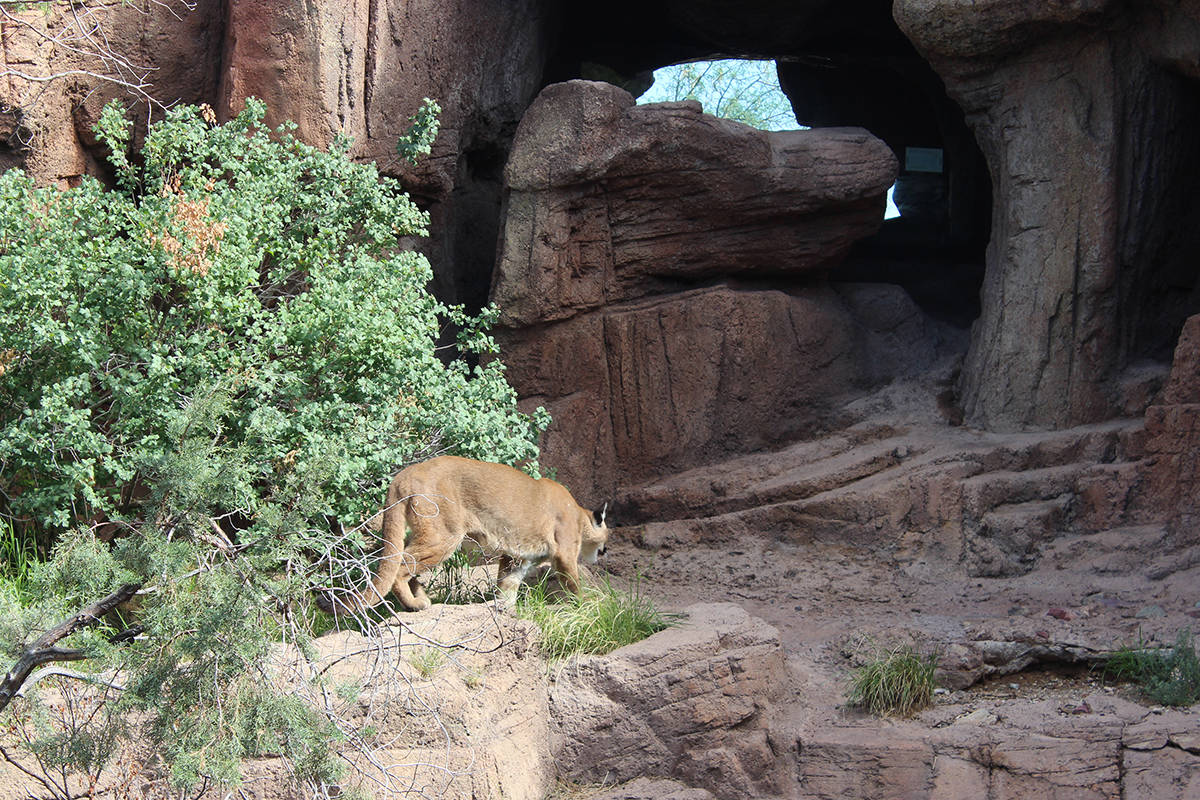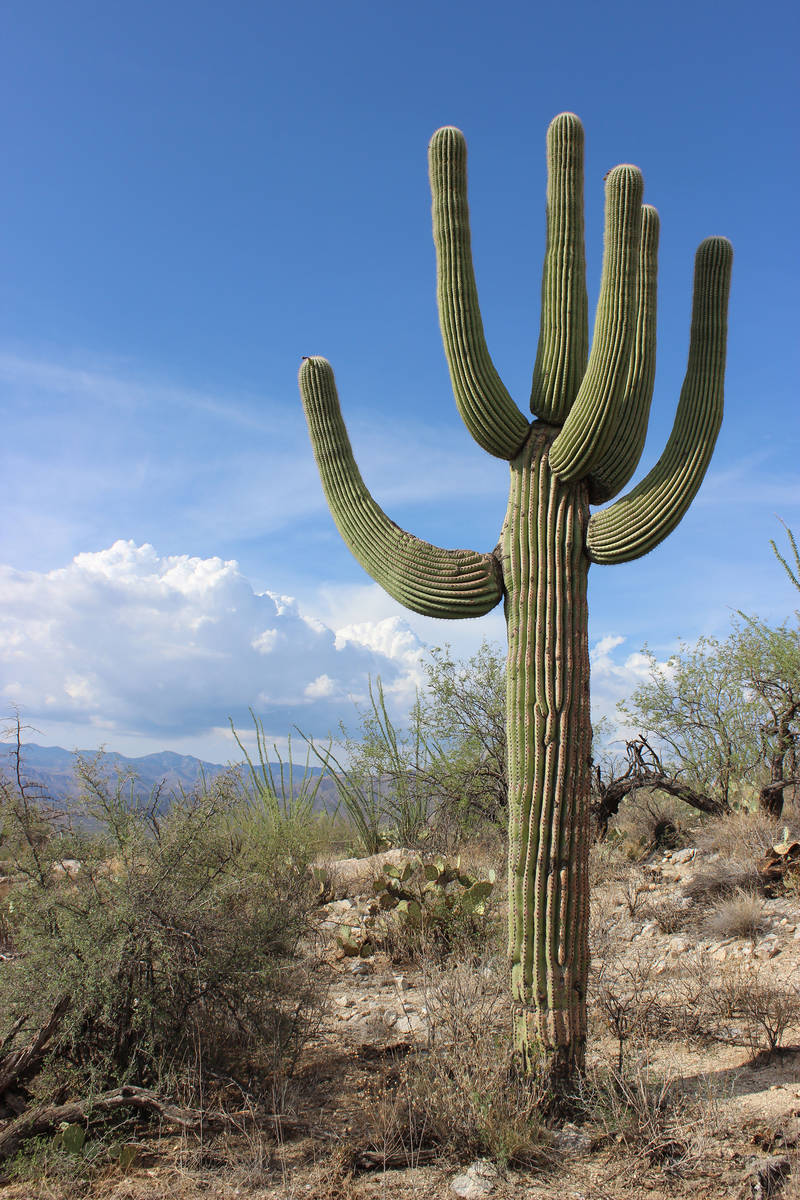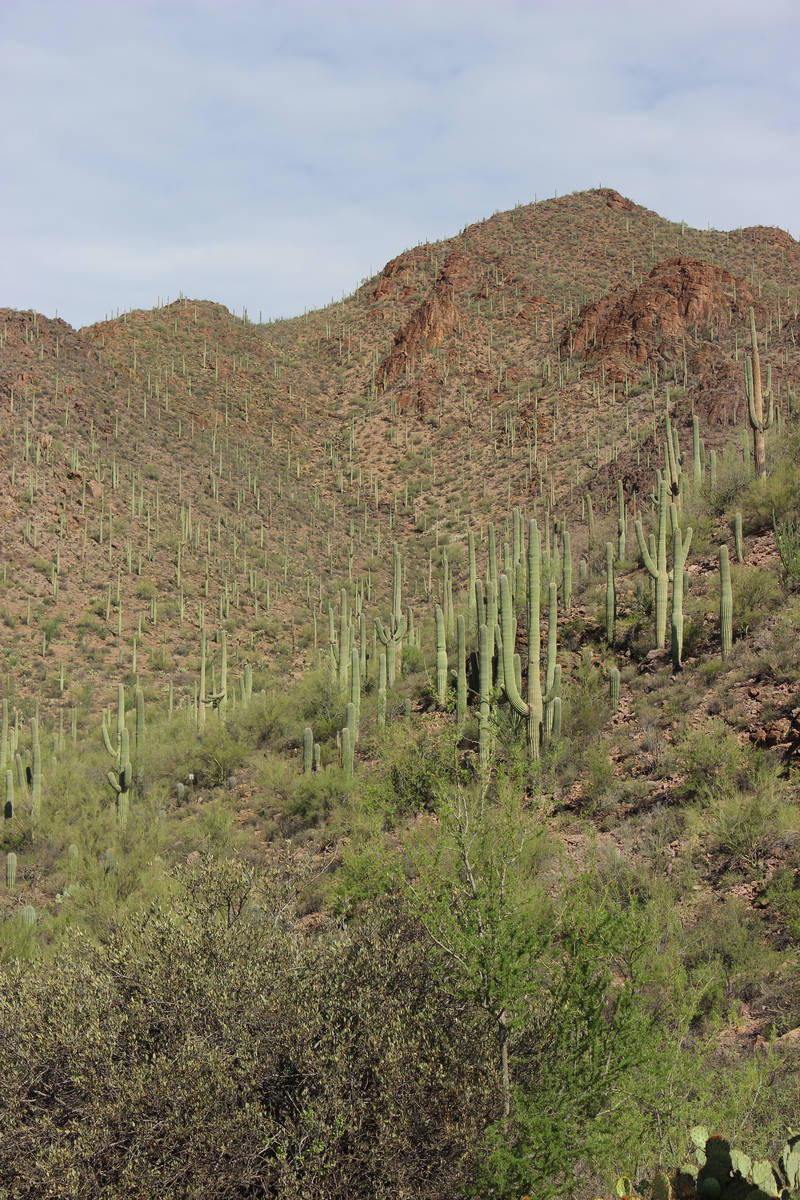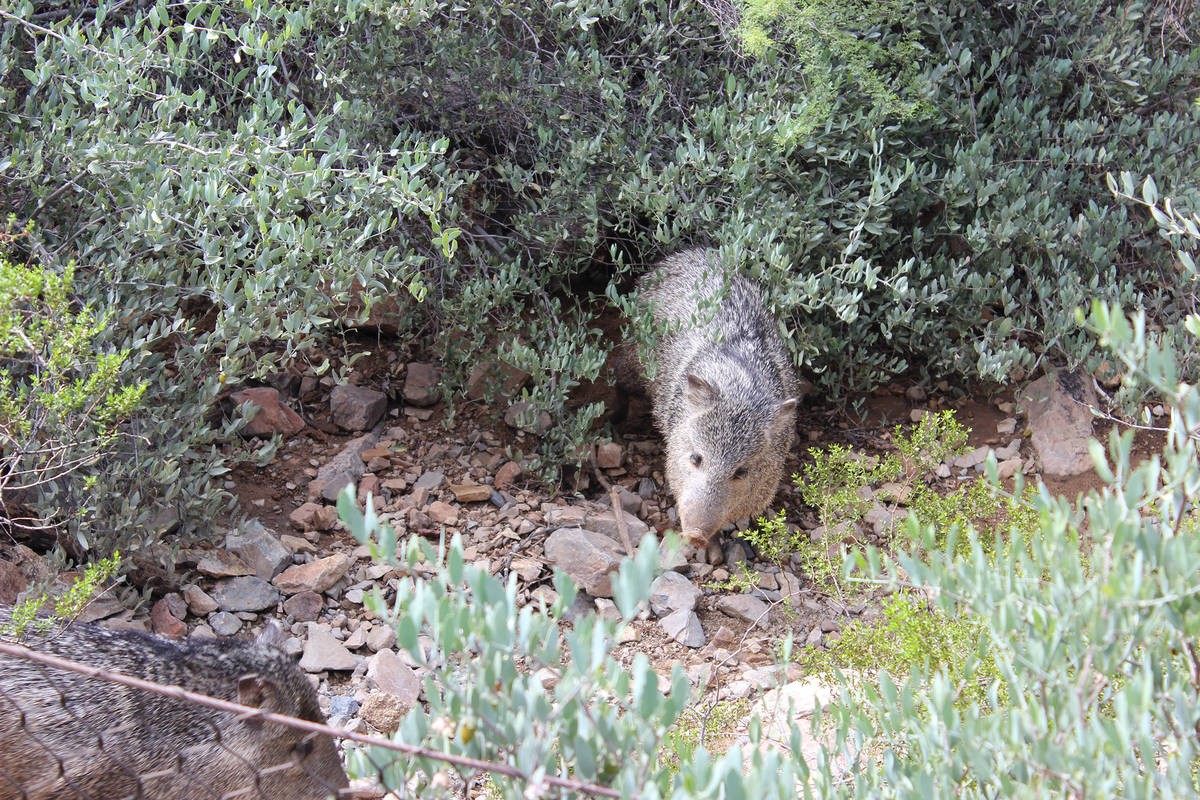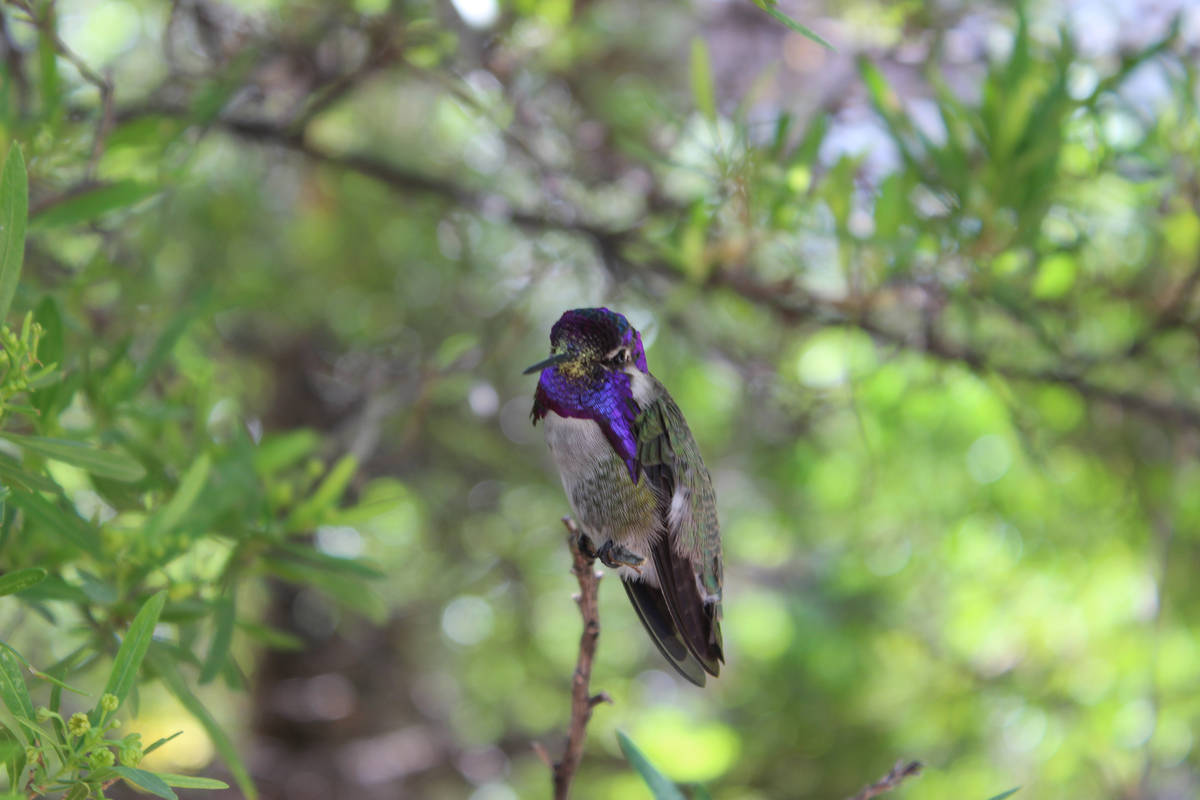Tucson perfect for those craving getaway
If you are itching to get away for a few days, but don’t want to travel too far, consider Tucson, Arizona.
The fabled city lies about a 6½-hour drive south from Boulder City. While Tucson’s elevation of 2,389 feet is not too different from Boulder City, flora and fauna found in the Sonoran Desert is vastly different from those in our own Mojave.
Tucson’s weather is great this time of year. February’s average daily high temperatures are in the low 70s, with overnight lows in the high 40s.
While there are plenty of outdoor attractions, three of them stand out.
Saguaro National Park is named for the towering saguaro cactus (Carnegiea gigantea), the signature plant of the Sonoran Desert. These slow-growing cactuses can reach more than 40 feet, but a small one — about 2 feet tall — could be 30 years old. The first “arms” on a saguaro might not appear until it is 50 to 100 years old.
There is no better place to see saguaros than here since the park is home to about 1.5 million, split between the its two districts.
The Tucson Mountain District lies on the west side of Tucson and the Rincon District is to the east. Between the two, there are more than 150 miles of trails, from easy to multiday adventures. In February and March, several varieties of cactus bloom, but saguaro cactuses start blooming in late April, once the heat starts to set in.
The white, waxy flowers appear at the top of the trunk or arms, opening at night and closing by mid-afternoon. In June they produce a red fruit, which native people harvested for food.
Currently, visitor centers are open from 9 a.m. to 3 p.m. Thursdays through Mondays, and are limited to 10 guests at a time. Public programs are closed, but the desert trails, bathrooms, picnic areas and roads are open. To reduce cash handling and contact, the park encourages visitors to pay entrance fees online before visiting.
Because of the pandemic, it is always wise to get last-minute updates on closures or changes in the park before setting out; contact nps.gov/sagu or 520-733-5153.
Another excellent destination, and an especially great choice if you have children along, would be the 98-acre Arizona-Sonora Desert Museum. About 14 miles west of Tucson, the museum is only 2 miles from Saguaro National Park West Visitor Center in the Tucson Mountain District.
The museum is primarily an outdoor one with 85 percent of exhibits along walking trails. Visitors can enjoy more than 55,000 plants of 1,200 native species along 2 miles of gravel and paved trails.
This is also a great place to learn about mammals, reptiles, amphibians and birds. The highlights include the Mountain Woodland habitat, which features mule deer, a black bear, a mountain lion, Mexican gray wolves and a porcupine. The Desert Loop Trail is home to javelinas, coyotes and lizards. Be sure to stop at the hummingbird aviary, which boasts many different species.
The museum is now open from 8:30 a.m. to 5 p.m. through February, and from 7:30 a.m. to 5 p.m. March through October. Plan to spend at least two to three hours minimum. Advance tickets are necessary; get them at desertmuseum.org or through guest services at 520-883-1380.
For more information contact the museum at 520-883-2702. Masks are required at all times for everyone over 5 years old.
Another favorite place to visit that is especially kid friendly is the 24-acre Reid Park Zoo, home to more than 500 animals. This city-owned zoo is one of the best in our region and worth supporting as it is deeply involved with conservation programs throughout the world to save animals and their habitats. The zoo is quite clean.
Located in the heart of Tucson, it is open from 9 a.m. to 4 p.m. daily through May, and 8 a.m. to 2 p.m. June through September. Advance tickets are required. Call 520-791-3204 or visit reidparkzoo.org for more information.
Many of Deborah Wall’s columns have been compiled into books about hiking in the Southwest. She is also the author of “Great Hikes, a Cerca Country Guide” and a co-author of the book “Access For All, Seeing the Southwest With Limited Mobility.” Wall can be reached at Deborabus@aol.com.
Directions:
From Boulder City, head south about 380 miles on U.S. Highway 93. The road merges with U.S. Highway 60 and Interstate 10.

